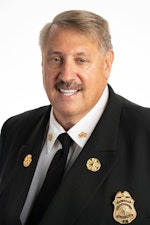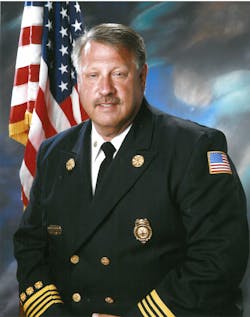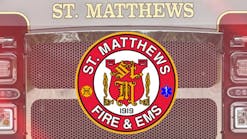The firefighter-paramedics of the future who are born in the 2017 will probably never drive a fire engine or an ambulance. They will be 21 years old in 2038, and it is predicted that we will be at least 10 years into self-driving automobiles by then. Commercial vehicles will soon follow with tractor-trailers, cabs, and even fire engines and ambulances. There is also a good chance that the vehicles these future firefighter-paramedics will be riding in will be battery-powered, and carbon emissions from gas and diesel engines will be a thing of the past.
It also predicted that the children born in 2017 will easily live to be over 100 years of age, and children born after 2030 can expect to maybe live to 150 years of age, as genetic mapping will help eradicate diseases such as cancer, diabetes, heart disease. Genetic manipulation may also slow the aging process. Imagine calling in your report to the hospital by announcing that you’re transporting a 127-year-old man who slipped and fell, and they are now immobilized on your hover backboard.
Agendas new and old
Earlier this year, applications were taken for a technical expert panel (TEP) for a new project called EMS Agenda 2050. The entire EMS community will be engaged in the collaborative two-year effort to create EMS Agenda 2050, which is essentially a blueprint for EMS for several decades. This project is funded by the National Highway Traffic Safety Administration Office of EMS, EMS for Children Program at the Health Resources and Services Administration, the Office of the Assistant Secretary for Preparedness and Response at the Department of Health and Human Services, and the Department of Homeland Security Office of Health Affairs.
In 1996, the first EMS Agenda for the Future created a roadmap for the future. The vision of that 1996 Agenda was as follows: “EMS of the future will be community-based health management that is fully integrated with the overall health care system. It will have the ability to identify and modify illness and injury risks, provide acute illness and injury care and follow-up, and contribute to treatment of chronic conditions and community health monitoring. This new entity will be developed from redistribution of existing health care resources and will be integrated with other health care providers and public health and public safety agencies. It will improve community health and result in more appropriate use of acute health care resources. EMS will remain the public’s emergency medical safety net.”
To realize this vision, the 1996 EMS Agenda for the Future proposed continued development of 14 EMS attributes, including Integration of Health Services, EMS Research, Legislation and Regulation, System Finance, Human Resources, Medical Direction, Education Systems, Public Education, Prevention, Public Access, Communication Systems, Clinical Care, Information Systems and Evaluation.
Twenty years later, we are set to create a new agenda over the course of the next two years. Stakeholders from all over the EMS community will come together to develop a new vision for the future of EMS and how to reach that goal.
Mike Taigman, the project facilitator, said: “Our commitment is to gather ideas, hopes, dreams and aspirations from anyone and everyone who would like to see a bright and bold future for EMS. The process will be wide open and inclusive; all ideas are welcome. In addition to having knowledge of healthcare and EMS, ideal members of the TEP (Technical Expert Panel) will have a bias for collaboration, an ability to dream big, and a willingness to step beyond the comfort zone.”
If you don’t get chosen for the TEP, don’t despair. There will be plenty of opportunity to make your voice heard through public comments on information that is released periodically. Additionally, there will be regional stakeholder meetings, webinars and conference sessions where you can weigh in.
Looking ahead
I am quite sure the advances in medicine and other technology will leapfrog rapidly in the future. I can see using virtual reality (VR) for training purposes. Imagine a room full of paramedic students working as a team on a cardiac arrest patient through their VR headsets. Imagine the new types of drugs that will have an immediate and dramatic effect on your patients or the new types of devices you will attach to your patients to monitor their status.
The future is certainly going to be interesting in EMS. I hope I am here to see it.

Gary Ludwig
GARY LUDWIG has served in three fire departments over his career: St. Louis, Memphis, and Champaign, IL. His fire, EMS and rescue career spanned a total of 46 years, and he has been a paramedic for over 44 years. Ludwig served as president of the International Association of Fire Chiefs in 2019-20. He has a Master’s degree in Business and Management, has written over 500 articles for professional fire and EMS publications and is the author of seven books.
Connect with Gary
Email: [email protected]
Facebook: Gary Ludwig
Twitter: @ChiefGaryLudwig
Website: garyludwig.com






